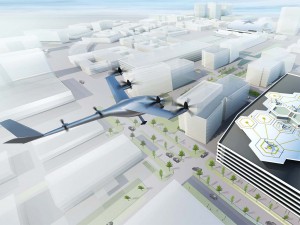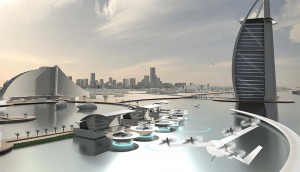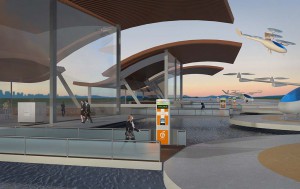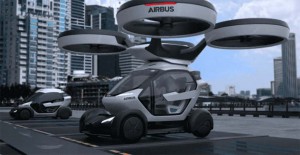It looks like ride-sharing service Uber is about to take off – quite literally.
Already running tests on a network of autonomous vehicles, Uber now wants to launch a flying taxi service. At a summit meeting in Dallas, Uber officials revealed plans to begin test flights by 2020 in Dallas and Dubai for what the company plans to call Uber Elevate.
“Urban aviation is a natural next step for Uber,” chief product officer Jeff Holden said ahead of the opening of the three-day Uber Elevate Summit in Dallas. “That’s why we’re working to make ‘Push a button, get a flight’ a reality.”
The ride-sharing firm says it is partnering with both Dallas and Dubai to initiate the Uber Elevate Network – the Mideast city-state hopes to have the pilot program ready to launch in time for the 2020 World Expo there.
Other partners include aircraft manufacturers Embraer and Bell Helicopter, as well as Aurora Flight Sciences, a company that would develop some of the technology needed for the service.
(Has the era of the flying car finally arrived? Click Here for the latest.)
Uber is the latest in a growing list of companies exploring the possibility of flying cabs, a list that includes the Munich-based start-up Lilium, as well as aerospace giant Airbus, which recently revealed a concept called Vahana. Google co-founder Larry Page reportedly has funded another start-up called Zee.Aero.
With its well-established ride-sharing service now operating in nearly 600 cities around the world, Uber does have some potential advantages in establishing a flight-on-demand service. Its smartphone app is already on millions of phones and might simply need to add another button to let a user choose between a ground-based ride and one taking to the air.
Meanwhile, with a market capitalization of around $70 billion, Uber has plenty of capital – some of which it is already using to fund development of autonomous and fully driverless vehicles. And partners like Bell and Embraer would certainly be expected to chip in on the development costs in the hope of developing major new markets for their products.
(Waymo invites public to join in for test of its autonomous vehicles. Click Here for the latest.)
The aircraft Uber is considering wouldn’t be much like the planes we fly in today, however. For one thing, they’d more likely be vertical take-off-and-landing, or VTOL, craft. Some might use rotating wings, much like the Osprey, the troop carrier used by the U.S. military. Others might have multiple rotors, much like today’s drones.
Some of the craft might also be able to operate like an automobile on the ground, driving the customer for the first and last miles, rather than requiring them to go to an airport or even an in-town terminal.
Among the manufacturers exploring that option is aero giant Airbus, the European manufacturer recently releasing an animation of a concept it calls Vahana. Developed in cooperation with Italdesign, it relies on modular components, including a four-rotor drone unit that would attach to the top of a passenger car’s cabin. The vehicle’s wheels and chassis would be left behind as the aircraft flew to its destination. There it would mount on a new chassis, the drone portion separating for use with another flyer, while the now-wheeled vehicle would drive to its final destination.
Filling the air with flying cabs might raise a number of flags, especially among those worried about noise and pollution, but Uber and its partners claim the Elevate project could actually be clean and quiet. At least some of the vehicles under consideration would be powered by electric motors, rather than using gasoline or kerosene. Among the partners Uber has lined up for Elevate is ChargePoint, a major supplier of automotive charging stations. It is working on a rapid-charge system that would be used at Uber’s central terminal.
The debut of the Uber Elevate concept comes at a critical time for the company. The ride-sharing giant has been hammered by allegations of sexual harassment and faces a major lawsuit filed by Waymo accusing several Uber employees of stealing intellectual property related to Waymo’s autonomous vehicles.
Meanwhile, Waymo’s own self-driving vehicle program was involved in a well-publicized crash in Arizona recently, a few months after it was briefly forced to shut down a pilot project in San Francisco.
There’s no question, the company would like to rise above its current problems. But even if it can develop the necessary technical solutions, there’s no guarantee Uber’s flying cabs will ever take to the air, as appealing as the concept might be.
The current air traffic control system struggles with the load of aircraft in the skies today. Adding thousands, perhaps hundreds of thousands, more small craft would require some serious infrastructural updates.
Like the autonomous and fully driverless vehicles Uber eventually hopes to launch, it remains to be seen whether Project Elevate will ever get off the ground.
(Waymo levels new charges against Uber in autonomous vehicle lawsuit. Click Here for the latest.)




